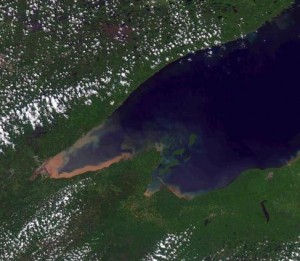 Mother Nature has been kicking up her heels over the past few weeks. In the sense that she’s been leveling leg punches to the head of mankind. She’s also been working on what looks like a preview of the end of days, using two strikingly opposed mechanisms.
Mother Nature has been kicking up her heels over the past few weeks. In the sense that she’s been leveling leg punches to the head of mankind. She’s also been working on what looks like a preview of the end of days, using two strikingly opposed mechanisms.
Colorado has been on fire. The nightmare burn around Fort Collins has been followed by the Waldo Canyon Fire outside Colorado Springs, which is now being called the worst wildfire in Colorado history, which is saying something. It’s claimed at least one life, along with 346 homes and 19,000 acres . And Reuter’s reports that “it’s just one of more than 40 large, uncontained wildfires being fought across the United States, the bulk of them in 10 western states — Colorado, Montana, Wyoming, Utah, Idaho, South Dakota, Arizona, New Mexico, Nevada and even Hawaii.”
Fire is eye-crack. It’s hard not to look at it, which makes for good video and heavy media coverage.
Less photogenic but also epic was the rain that swept over Lake Superior’s north shore last weekend. The initial storms dropped an estimated 43 billion gallons of water on the region, which washed out roads and caused mudslides. Sinkholes opened in Duluth, animals floated away from the zoo, and an 8-year-old boy fell into a culvert and was carried a mile through a 24-inch pipe at speeds of up to 20 miles an hour. He popped out downstream, his only injury a dislocated elbow, after having had a ride that would cost you $29.95 at most American water parks.
It’s too soon to predict the aftermath of Colorado’s fires. For Lake Superior, the aftermath is already showing up—on the ground and on satellite images. In what the Duluth News Tribune says “may be an unprecedented erosion event, the western reaches of the world’s largest freshwater lake looked more like a mud puddle over the past week as hundreds of tons of material fouled the lake miles out from river mouths. Boaters report entire trees floating in the lake.”
The lake’s “chocolate milk tint” darkened the water down to 100 feet, causing “tiny creatures called copepods, which usually rise out of the depths only at night, were swimming about at midday, something no one had ever seen.”
Satellite image of western Lake Superior via NOAA.









